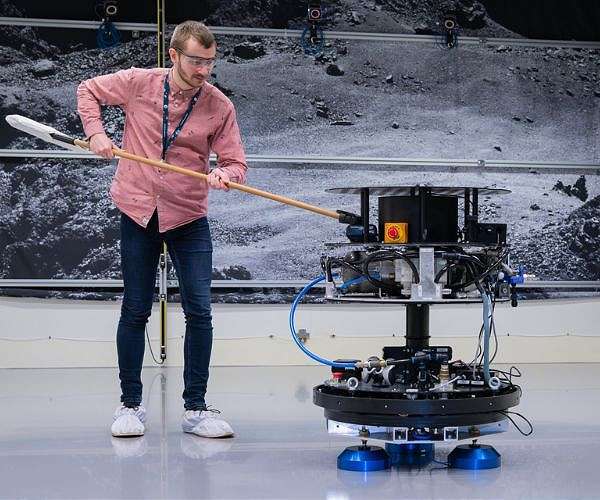6.02.2024

In an innovative step towards advancing space technology, the European Space Agency's (ESA) ORBIT laboratory at the ESTEC technical center in the Netherlands has become the stage for a unique experiment. Jules Noirant, an ESA engineer, recently conducted a noteworthy test involving a satellite simulator platform that floats on a cushion of air, showcasing the lab's capabilities in simulating the weightless conditions of space on Earth.
The focus of this experiment was on the REACSA platform's guidance, navigation, and control algorithm, particularly its ability to counteract and overcome resistance to its programmed motion. This test was carried out over what is known as the flattest floor in Europe, a 45 square meter ultra-flat surface part of the ORBIT (Orbital Robotics Test Bench for Integrated Technology) facility. This area of the ESTEC technical center is dedicated to the rigorous testing of orbital technologies before their deployment in space.
Maintained meticulously dust-free, the ORBIT facility operates similarly to an air hockey table, albeit in reverse. Here, air-bearing platforms glide across the surface, simulating the free-floating behavior experienced by satellites and other space objects, albeit in two dimensions. The precise movements of these platforms are tracked by a surrounding motion capture camera system, ensuring detailed analysis and feedback on the tests conducted.
Simulating weightlessness on Earth is crucial for validating the functionality and reliability of space technologies. In the absence of gravity, even the slightest contact force can induce significant changes in motion, a phenomenon that can be challenging to intuit and accommodate in the development of space-bound technologies. The ORBIT facility's innovative approach allows researchers to closely mimic these conditions, providing valuable insights into how technologies perform in the unique environment of space.
The facility has been instrumental in testing a variety of technologies critical to space exploration and maintenance, including the robotic capture of orbital debris and the operation of satellite interlocking elements under weightless conditions. Looking ahead, the ORBIT lab is set to play a key role in the new ESA Education campaign through the ESA Academy Experiments Programme, which aims to engage and educate the next generation of space engineers and scientists.
This recent experiment underscores ESA's commitment to pushing the boundaries of space technology and exploration. Through the use of creative and sophisticated testing environments like the ORBIT lab, ESA continues to pave the way for future innovations in space, ensuring that Europe remains at the forefront of the global space exploration effort.
Quelle: SD

